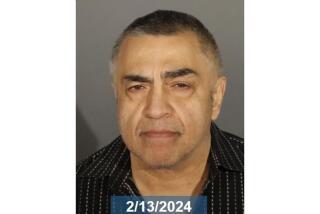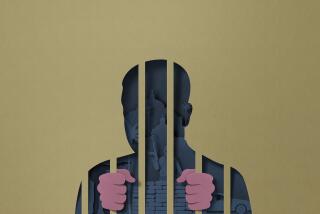Marcos Jury Given Mixed Bag of Evidence
NEW YORK — History may have already passed judgment on Ferdinand E. Marcos, the Philippine president who impoverished his nation to fill his own secret bank accounts around the globe, but an American jury of office clerks, postal employees and utility workers still must decide if the dictator’s widow was his accomplice.
And as final arguments begin here this morning, culminating a grueling, emotion-charged trial that began three months ago, the evidence is mixed.
Not one of 95 prosecution witnesses testified unequivocally that former Philippine first lady Imelda Marcos engaged in the coercion, bribery and kickback schemes that marked her late husband’s graft-tainted regime.
Nor is there much evidence among thousands of documents that record hundreds of millions of dollars in lavish spending on art, jewelry, clothes and real estate that links her directly to the corrupt plots used to acquire the money in the first place.
If there is a weakness in the sweeping federal fraud and racketeering case against the 60-year-old widow, it is here.
Imelda Marcos “just isn’t like us,” Wyoming attorney Gerry Spence has told jurors since he opened her defense.
He compares the former first lady to a queen who left the details of business to her husband and confidants, who “never wrote a check” or personally paid a bill in her life.
“She was a wife . . . she wasn’t a financier,” Spence insists.
But that is not the whole picture displayed for this jury.
Records and testimony show, for example, that it was the first lady--not the president--who plunged the Marcoses into what would become the costly and fateful morass of Manhattan real estate investments, ventures financed by money the government contends was looted from the Philippine treasury and fraudulently obtained from banks in New York and California.
Evidence shows it was Imelda Marcos--not her husband--who spent millions of dollars on art and jewelry that ended up being charged against Philippine treasury notes and the profits of a government-owned bank. According to testimony, bags filled with $100,000 in cash were routinely withdrawn from the Philippine National Bank and delivered to her at her Waldorf Hotel suite.
And it was Imelda Marcos--in concert with her husband, according to records and witnesses--who helped establish and maintain secret bank accounts into which poured hundreds of millions of dollars in bribes, kickbacks and coerced shares of business profits in the Philippines.
Spence called it “a way of life . . . a part of the system” in Third World countries like the Philippines; prosecutors called it “theft and plunder.”
“She wasn’t just his wife,” Assistant U.S. Atty. Debra Livingston said from the outset. “Imelda Marcos and Ferdinand Marcos were partners in crime.”
If convicted of racketeering, the former first lady faces a $1-million fine and forfeiture of millions more in assets, including real estate, art, jewels and bank accounts that would be turned over to the Philippine government. She also could be sentenced to 50 years in prison.
The indictment of Ferdinand and Imelda Marcos in 1988, what presiding U.S. District Judge John F. Keenan called “unprecedented . . . in the annals of American jurisprudence,” marked the first time a former head of state had been charged with a crime in an American court. After the exiled president died in Hawaii last September, his wife became the first spouse of a former head of state to stand trial in the United States.
Prosecutors say she violated American law while she was still first lady of the Philippines by stealing money in her own country and “exporting the fruits of fraud” to the United States. She continued to commit fraud after fleeing to Hawaii, they contend.
The Justice Department lawyers built their case largely around the Marcoses’ secret purchase of four Manhattan skyscrapers and her lavish spending habits.
According to records and testimony, Imelda Marcos’ venture into the real estate market began in the late summer of 1981. She first tried unsuccessfully to buy a Park Avenue luxury townhouse filled with art and antiques collected by philanthropist Leslie Samuels.
As would be the case in later commercial real estate negotiations, she was represented by Gliceria Tantoco, one of the closest members of her inner circle, known as the “blue ladies.” Her name usually went on the bills of sale, records show.
After a gossip item appeared in a New York tabloid indicating the Philippine first lady was interested in the Samuels property, Tantoco threatened a young real estate agent that harm could come to him and his family if the confidentiality of the deal was compromised, testimony revealed.
But the real estate portion of the deal collapsed when the building cooperative board rejected Tantoco, apparently concerned that she was fronting for a secret owner.
In the end, the first lady did purchase the Samuels art collection. It was paid for out of funds transferred to New York for the successful purchase of another piece of prime real estate--the elegant Crown Building on 5th Avenue.
The Crown Building transaction apparently was the first lady’s project from its inception.
In 1981 she conferred first with the governor of the Philippine Central Bank about bidding on the building. Testimony indicated that the nation’s top financial officer later informed the president in order to get his approval to take pre-negotiation steps.
When Marcos later vetoed the deal, another banker testified, his wife made a tearful plea to the president to let her have the building as pamana , a term meaning inheritance. Evidence indicates she may have intended it as inheritance for her children.
Such testimony conflicted with Spence’s opening claims that New York real estate investments were made at the urging of then-Vice President George Bush to guarantee the Marcoses had resources outside the Philippines to finance their return if communist rebels took over their country. Those defense claims were never supported.
The Crown Building was purchased for $51 million. Complex money transfers helped conceal the Marcoses’ financial interests. Prosecutors called it money laundering.
To fund the purchase President Marcos personally engineered a $30-million diversion of the impoverished nation’s hard currency reserves. Another $6 million was advanced by the National Sugar Trading Corp., a quasi-public agency responsible for marketing the country’s sugar cane crops.
Such evidence undermined defense assertions that the money may have come from the Marcoses’ personal wealth.
Another $4.95 million coursing through the labyrinth of international bank accounts en route to New York went to pay for the Samuels collection of art and antiques.
Supposedly destined for a Manila museum or the official Philippine residence in New York--which might have justified expenditures of public funds--many of the valuable pieces ended up broken and covered with cobwebs in a shed outside the California home of the Marcoses’ daughter, Irene.
In her purchases of real estate, art, jewelry and other personal luxuries, the government says, she “orchestrated” frauds.
For example, prosecutors say, a checking account at New York’s Bankers Trust branch on Park Avenue maintained in the name of Fe Roa Gimenez was actually a secret account for Imelda Marcos. Gimenez was the first lady’s longtime private secretary.
Prosecution accounting experts testified that from the Gimenez account alone nearly $8 million of the first lady’s apparently personal expenditures--including $7.5 million in jewelry--were charged against Philippine treasury notes and the profits of Philippine National Bank.
And, in direct contradiction of attorney Spence’s opening statements, an FBI handwriting expert testified that the first lady did, indeed, write checks--millions of dollars worth of checks--signed with one of her several aliases: “Regina Marquez.”
The shroud of secrecy surrounding the Marcos purchases began to unravel in 1985 as a worsening political crisis threatened President Marcos in Manila.
Efforts to close a sale were under way when the revolution closed in first. The Marcoses fled into exile, leaving thousands of documents behind in Manila. Thousands more, many of which were used as evidence in the trial, were seized in Hawaii by U.S. Customs agents.
The new government of Corazon Aquino immediately won U.S. court orders freezing the Marcos assets.
At that point, evidence shows, Saudi financier Adnan Khashoggi was enlisted to help dispose of the Marcos property. According to testimony, false legal documents were created to reflect that Khashoggi had acquired control of the buildings prior to the freeze.
Other records and testimony disclosed that some of the Marcos art was spirited out of the United States to France aboard Khashoggi’s private jet and that a false document was prepared for French Customs agents showing the art had been acquired before the freeze.
Khashoggi is a co-defendant in the Marcos trial.
In cross-examinations of government witnesses Spence asserted that President Marcos was a wealthy man prior to his first election in 1965.
However, lead prosecutor Charles LaBella, 39, and his assistants Livingston, 31, and Denis McInerney, 30, have introduced overwhelming evidence that the wealth came instead from bribery, kickback, embezzlement and coercion.
They have shown, for example, that Marcos pocketed 10% to 15% “commissions” on all Philippine war reparations projects funded by the Japanese government, and that he owned substantial shares of virtually every industry in the Philippines--from mining and agriculture to shipping and insurance. Marcos even collected 50 cents on every bag of cement produced by one company.
Among factors working in favor of Imelda Marcos and her claim to be “just a wife,” however, was LaBella’s inability to link her directly to specific corruption schemes carried out in Manila by her husband.
Some believe Imelda Marcos, who dresses in mourning black every day, also could benefit from a sympathy factor. Jurors have seen her cry and react to the emotional stress of the trial. For some time she wore a blood pressure monitor that buzzed frequently in the courtroom.
Three weeks ago, as jurors gasped, she coughed up blood and collapsed at the defense table from the effects of stress-related gastritis.
More to Read
Sign up for Essential California
The most important California stories and recommendations in your inbox every morning.
You may occasionally receive promotional content from the Los Angeles Times.










